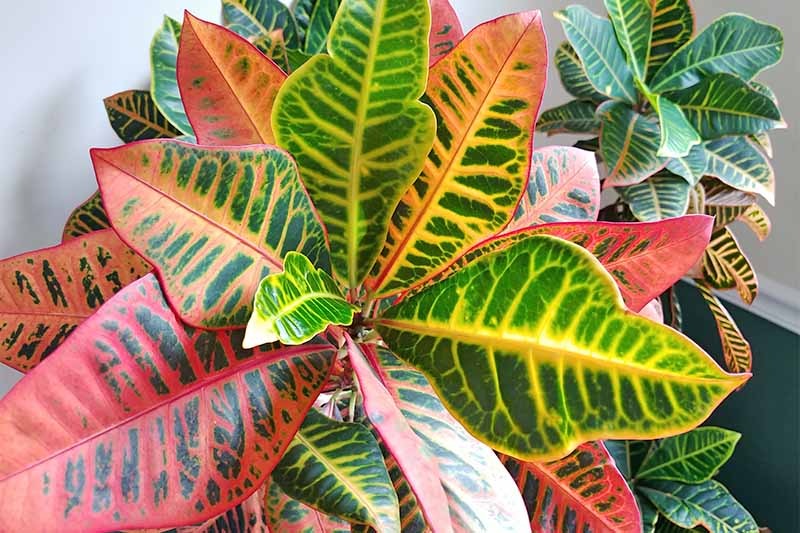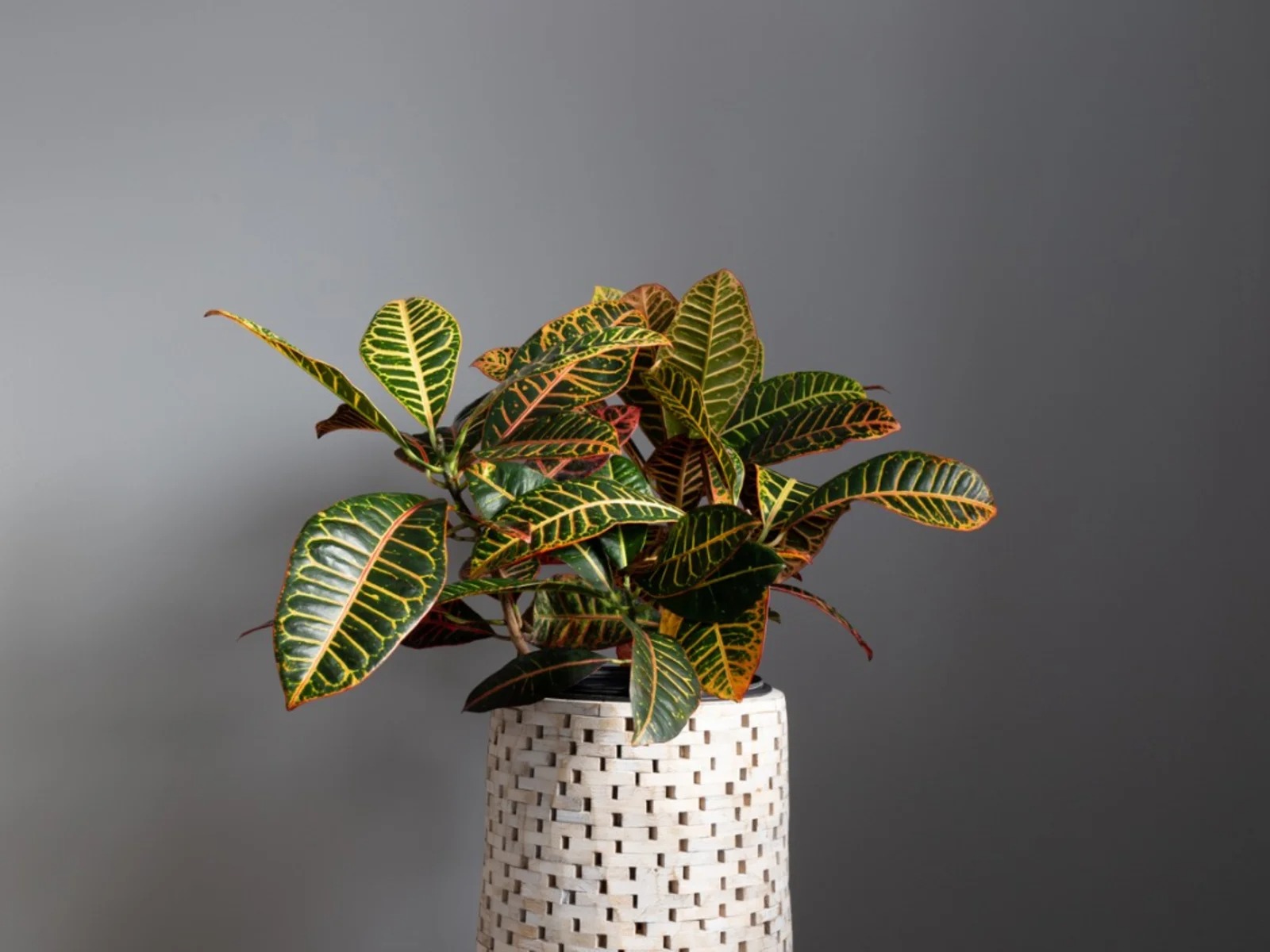Croton Plants the rigid and leathery leaves with bright colors of yellow, pink, red, Orange and green make it a beautiful and popular houseplant. Its varied colors give it another common name, Joseph’s coat. The Croton plant presented here is one of the most dramatic we have ever seen. Warm tropical colors and exotic patterned leaves make “Petra” an eye-catcher in any bright room.
I don’t know of any houseplant that gives you more bang for your buck than this one. These bright colors will compete with almost any flower you could call. Crotons are not easy to satisfy. The keys to success are a lot of sun, a warm and draft-free environment, moist soil and moist air. The dry air and the earth cause the Croton leaves to fall. Give the Kroton what he wants and you will enjoy this tropical beauty for a long time.
Croton problems, solutions and special care
Clean them up. Keep the leaves dust-free and shiny by gently wiping them with a damp cloth. Do not use shiny sheet products, Mayo or other shiny solutions that you may have heard of. Croton leaves are naturally smooth and shiny.
Give them room. If you bought a container with 2 or 3 plants (which is quite common), keep them together for the first year. If the plants seem overcrowded, give them the space they need by separating them. Divide the Croton plants by carefully cutting off their roots with a serrated knife, then plant each plant in its own container.
Too big?

Top them. Croton plants are by nature bushy, so they should not need to be pruned. If they become too large, You can prune them in the spring and multiply the stem cuttings.
Repot…isn’t that right?
Repot in the spring and put in a pan only 1 size larger. You can control the size of the Croton plant by storing it in the same container so that its roots are limited. Get the steps to repot your houseplant here. When the plant has reached the desired size, put it in its place every year.
Why do Croton leaves fall off ?

Croton may drop a few leaves when you take him home – he adapts to his new environment. If your plant keeps dropping leaves, it’s probably because of a lack of sunlight or dry soil. See the tips on “Light” and “water” below. Keep the installation away from drafts and heat/air conditioning. An increase in humidity can help. For best results, use a cool mist humidifier near the installation.
Is something annoying your plant?
Scale insects are white and fuzzy and look like cotton spots along the axils of leaves or stems. Red spider mites are so tiny that you will only see the thin tissue between the leaves and stems. These juice-sucking pests can cause yellow and dry spots on the leaves. Treat any infestation immediately to prevent these pests from spreading to your other indoor plants.
Are Croton plants harmful?

Oh, yes. This plant belongs to the euphorbia family and has harmful juice. Don’t be afraid of Crotons, but take some precautions. Keep Croton away from children and pets and wear gloves when handling.
Types of Croton varieties
Croton plant, Arrowhead Croton
Many varieties are available and their colors and shapes vary enormously. ‘Golden Bell’ is a newer Hybrid with long narrow leaves, usually green and yellow. ‘Bravo’ has lobed leaves with yellow veins. The most common variety is ‘Petra’, which is sprinkled with bright colors.
New varieties are being introduced, some of them with bent, twisted leaves and even corkscrews. Some are spotted, spotted or striped. ‘Gold Dust’ has small leaves, strongly spotted with yellow. The banana croton bears twisted, yellow-green leaves.



